One Hundred Years Ago
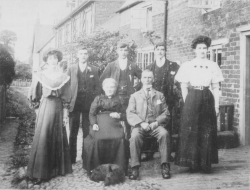
The Last 100 Years Have Been A Time Of Great Changes In The Way People Live Their Lives
One Hundred Years is not a very long time, in fact for many of us, it was the time when our Great Grandparents or even Grandparents were alive, and for some of us, our parents were not far off being born either.
My Mother for example was born in 1918, and my Father in 1922. They are both sadly no longer with us today, but what a different world they both grew up in compared to the one that we know today.
One Hundred Years Ago the automobile was still in it's infancy, and the world had not yet been covered in tarmac or concrete roadways to make their journeys faster and less bumpy. What is credited as being the first powered manned flight, by the Wright Brothers, only took place in 1903, and therefore the Age Of Flight was just beginning as well. It was not until 1927 that Charles Lindbergh took that giant leap and made the first non-stop flight across the Atlantic Ocean.
The last one hundred years have seen many discoveries and inventions, some good, some not so good.
We now have highly automated cars, planes and trains that can travel at hundreds of miles per hour. Man has flown to the Moon and back. We have been to both the North and South Poles. Nuclear powered submarines can travel around the world non-stop without the need to surface.
Radio was in it's infancy, and ship to shore telegraphy using Morse Code was just beginning to be introduced. It would be a few years before every house had electricity, let alone radios. Although John Logie Baird had demonstrated the television back in 1876, it would be the 1930s before commercial broadcasting began.
So much has been achieved in such a short time, and yet only 100 years ago, before the unimaginable First World War, life was very different, yet changing faster than in any other time in history.
The articles and images used below are all more than 100 years old, and as such I have been advised by the national Library Of Australia that they are now out of copyright, and may be reproduced. The image above is copyright Tony Payne.
This lens has been featured at The Homeschool Club on Facebook.
News From 100 Years Ago
I love to read old news stories, and while doing research for a book that I am hoping to write, based on events that my Grandfather experienced in the early 1900s, I came across the digitised newspapers from the National Library Of Australia which are on a section of their site called Trove, and they are indeed a "Treasure Trove" of information, with thousands of newspapers, photographs and magazines from the Australian Press, dating back as far as 1803, all scanned and indexed.
With Newspapers from one hundred years ago being the main way that people could learn about events around the world, these historic newspapers hold articles of the type that you don't often see today, and tell of events around the world, not all historically significant, but frequently events that we don't experience today.
I hope that you too enjoy delving back into history, and that you enjoy this trip down memory lane, as I take you back in time to the events of yesteryear.
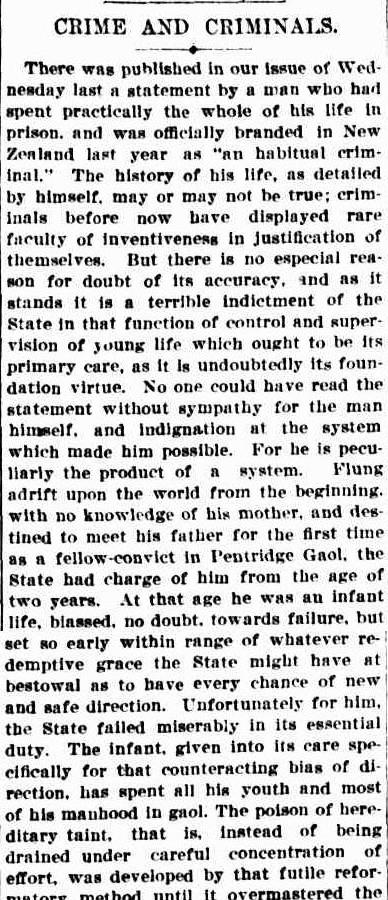
Crime And Criminals
From The Sydney Morning Herald - 18th February 1911
In February 1911 people were beginning to question whether sentencing criminals to years of hard labour was the best way to deal with them, as against using more modern techniques with the hope of being able to rehabilitate them into society.
The Sydney Morning Herald from Australia on the 18th February 1911 included an article that was a follow-up to one printed the previous week about a man who had spent most of his life incarcerated in prison in New Zealand.
The article voices how many readers must have felt sympathy for the man, who was dealt a poor hand by society from the start, and the story holds many similarities with habitual criminals in today's world 100 years later.
Flung adrift upon the world from the beginning, with no knowledge of his mother, and destined to meet his father for the first time as a fellow convict in Pentridge Gaol, the State had charge of him from the age of two years.
At that age he was an infant life, biased, no doubt, towards failure, but set so early within range of whatever redemptive grace the State might have at bestowal as to have every chance of new and safe direction.
The article continues on how society and the system has failed this man, something which still happens all too often today, but also that in the early 1900s the system of using punishment as a means of deterring people from being criminals was being called into question.
Read the original digitised article...
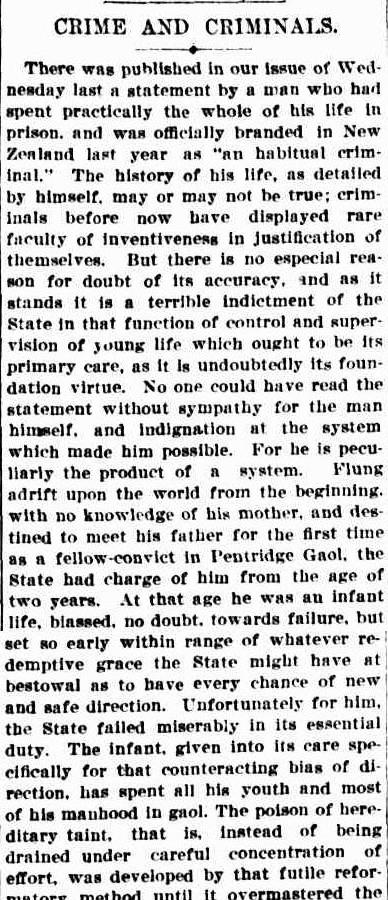
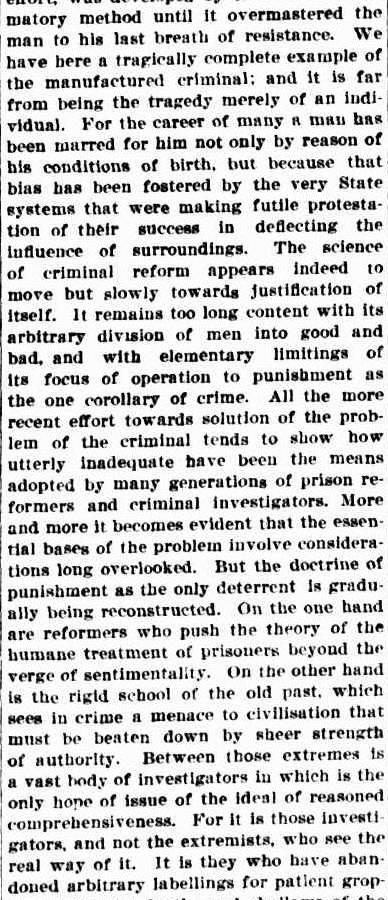
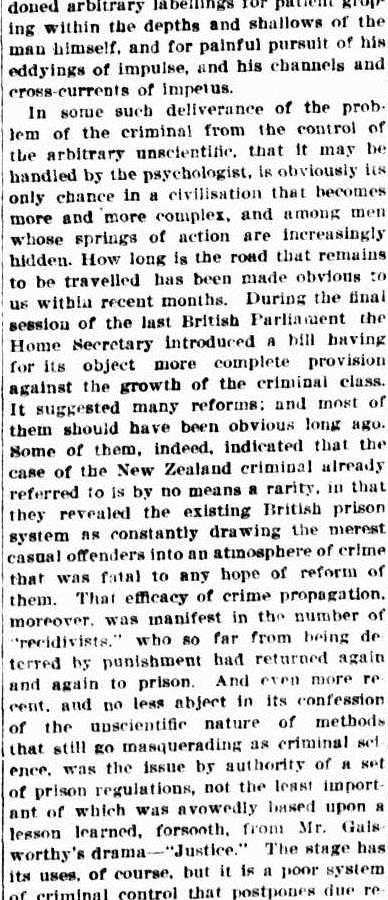
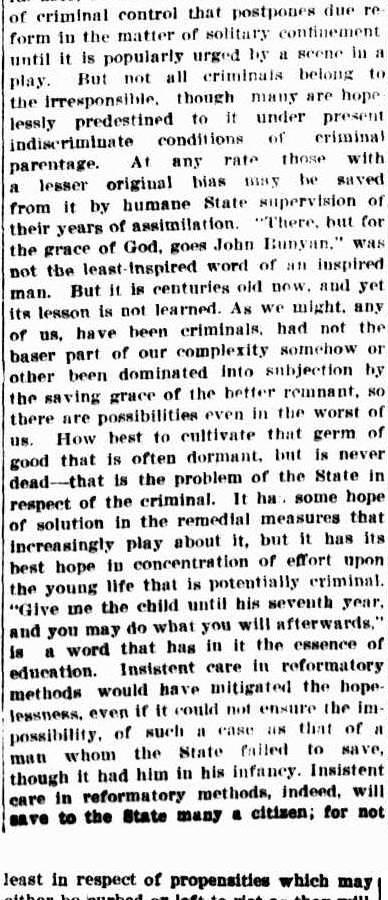

Reform And Retribution - An Illustrated History Of America's Prisons
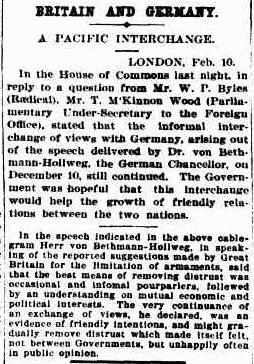
Britain And Germany 1911
From The Sydney Morning Herald - 11th February 1911
The Sydney Morning Herald from Australia on the 11th February 1911 included an article covering discussions in the House Of Commons the previous day, relating to interchanges between Britain and Germany, and political attempts to improve friendly relations between the two nations.
For those of you who are unaware, at the time when it was the evening of 10th February in London, it was already morning on the 11th February in Sydney, Australia. The fact that the newspaper of the day in Australia could print a story from what was only a few hours previous in England, is due to the laying of the early undersea telegraph cables from London to Australia, the link-up being completed in the 1870's.
It is interesting to note that in early 1911, Germany was eager to be on good relations with Great Britain, however as can be seen from this article of the time, the British Government was already becoming wary of the arms build up in Germany, and was suggesting that "limitation of armaments is the best means of removing distrust".
Read the original digitised article...
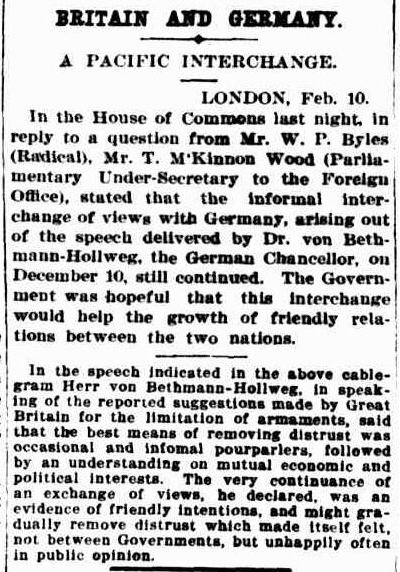
9 in. x 12 in.
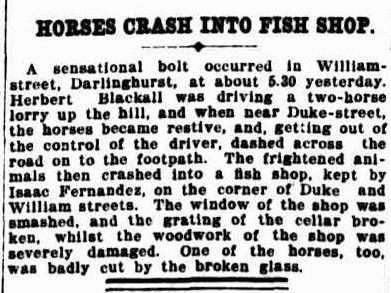
Horses Crash Into Fish Shop
From The Sydney Morning Herald - 28th January 1911
The Sydney Morning Herald on 28th January 1911 printed this article about an accident involving a delivery truck, that was being driven up a hill, when the horses became alarmed, causing the driver to lose control. As a result, the horses and their attached vehicle ended up crashing into a fish shop, breaking the window, and causing an injury to one of the horses.
HORSES CRASH INTO FISH SHOP
A sensational bolt occurred in William Street, Darlinghurst, at about 5:30 yesterday. Herbert Blackall was driving a two-horse lorry up the hill, and when near Duke Street, the horses became restive, and, getting out of the control of the driver, dashed across the road onto the footpath. The frightened animals then crashed into a fish shop, kept by Isaac Fernandez, on the corner of Duke and William Streets. The window of the shop was smashed, and the grating of the cellar broken, whilst the woodwork of the shop was severely damaged. One of the horses, too, was badly cut by the broken glass.
Apart from the fancy old fashioned use of the English language in the story, it makes us realize that only 100 years ago, goods being delivered in a lorry (truck/cart) pulled by horses, had been the standard way of doing things for thousands of years.
Here we are, at a historic point in time, where life for people all around the world is beginning to change, and stories like this were to be seen no more within the next 20 years.
The other thing that I reflected on, is the pace of the incident. The horses, bolting out of control across the road, might at best have reached 10 miles per hour, maybe a little more, but probably even less. They still caused a significant amount of damage, let alone to one of the horses, whose fate was not specified.
Read the original digitised article...
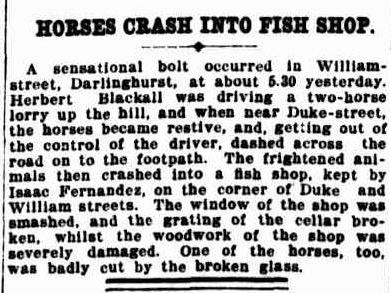
Books About Life 100 Years Ago - Life was very different 100 years ago, with cars and flying machines in their infancy.
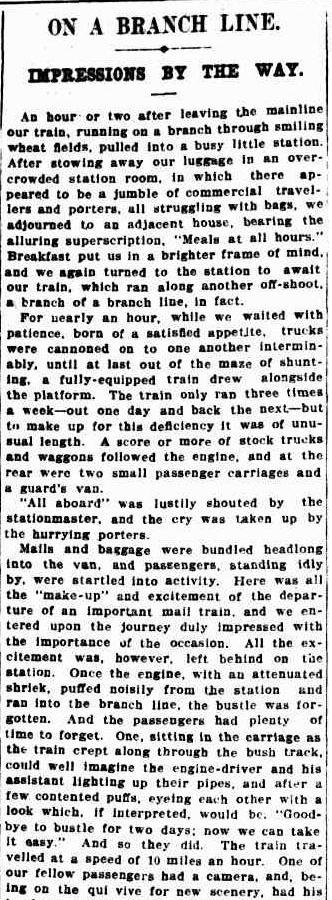
Journey On A Branch Line
From The Sydney Morning Herald - 21st January 1911
Travelling by train today you visualise high speed locomotives that rattle along their tracks at over 100 miles per hour, with few stops, and your destination is just hours away. One hundred years ago, however, in the heyday of the age of steam trains, travelling by train was a far more interesting journey, as well as being undertaken at a much slower pace.
The Sydney Morning Herald from Australia on the 21st January 1911 included a great article on what it was like to take a journey on a steam train along a branch line 100 years ago.
Back in 1911 railways were still in their prime, and the main method of transporting freight and passengers overland, with the motor car being still in it's infancy, and neither roads or refuelling stations set up to allow driving between anywhere but the larger cities.
Branch lines are less common these days than they were in the heyday of the railways, and for those of you who don't know what these are, they are suburban lines where trains run less frequently, and which connect smaller townships and villages to the main line.
Steam trains generally run at a much slower speed than modern express trains, and branch line trains used to stop frequently at small stations along the way, making the journey a rather long one, but still a lot faster and simpler than the alternative of going by horse and carriage.
This is a story of a journey along a branch line in Australia in 1911, where the development of the railways was a more recent thing as compared to the UK or USA, and where the arrival of a train in a rural area was still such a novelty that it brought the local people out to watch.
Read the original digitised article...
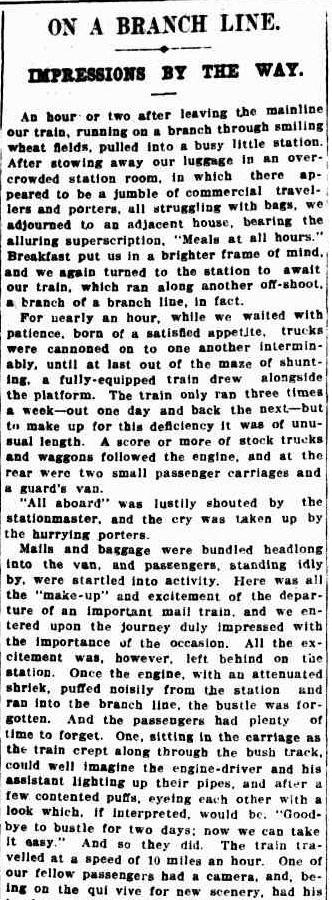
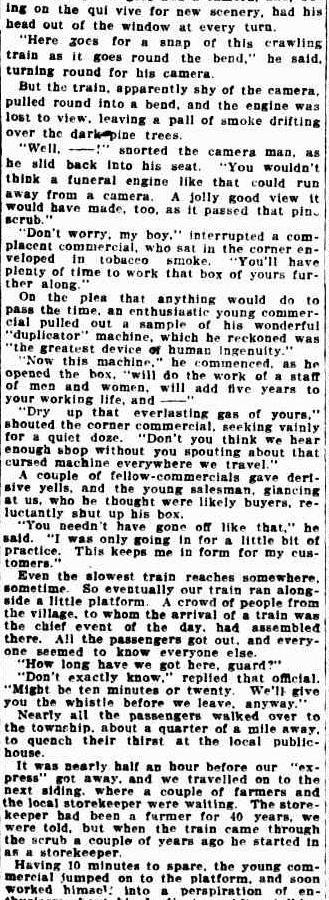
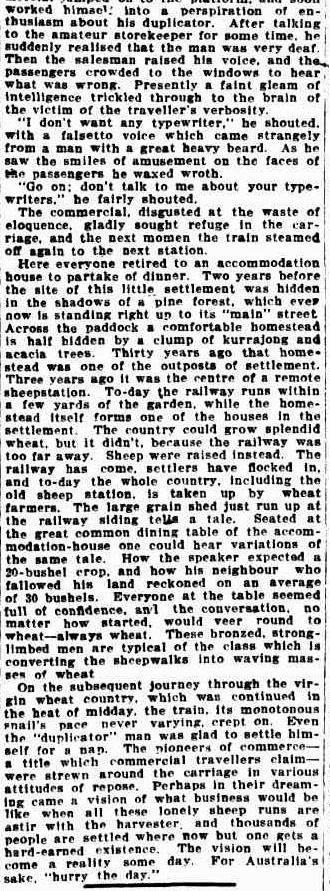
Books About Railway Journeys - Perfect for anyone who loves steam trains

The Bearers : On Safari In Deepest Africa
From The Sydney Morning Herald 11th January 1911
The Sydney Morning Herald on the 11th January 1911 had what I think is a wonderful article that paints a vivid mental image of what it was like to go on safari in deepest Africa 100 years ago.
Life is so different now, with tourists from all over the world being able to easily fly to Africa, and with resorts and lodges in the major game reserves providing tours that take them on drives across the savannah to see the Big Five animals, before returning them to their luxury accommodations.
I spent three weeks in Kenya myself in the early 1990s and went on safari twice, camping on the game reserves rather than staying in a luxury resort, but this was still a far cry from this article from 100 years ago, which describes an African safari as if was back then, a long trip into the wilderness with a host of guides and bearers.
One hundred years ago of course, much of Africa was controlled by European nations, with Great Britain being prominent in both East Africa as well as South Africa.
When you think of safaris in those days, you think of scenes from movies like The African Queen (ok that took place mostly on a steamboat), or Tarzan.
The author of this article from the Australian Press is named just STRAY, and I know nothing more of him (or her), but based on the quality of this article I may have to do some research.
Anyhow, after a long introduction, I would like to introduce some excerpts from this article, which is entitled THE BEARERS.
From the balcony it was a blur of red and black amongst the green grass of the compound. And for over an hour there was scarce a stir.
Then a man in dazzling white linen and helmet crossed the road. The blur moved - became a swarm of black and red figures running to and fro across the white road, bearing burdens which at the distance were also blurs. Back and back again for endless bundles, which, thrown down, were lost to sight in the green grass.
The author paints a wonderful image don't you agree, of one hundred or more native bearers, their skin black as ink, all dressed in red, working to move the baggage for the safari into position, ready to begin the journey into the jungle.
Read the original digitised article...
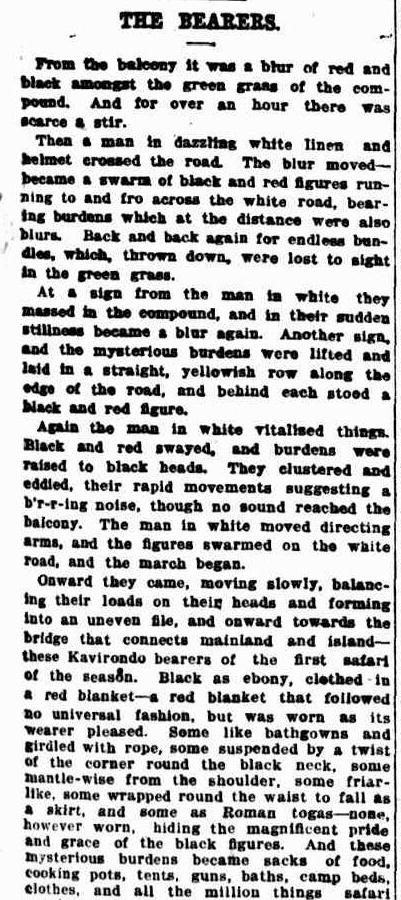
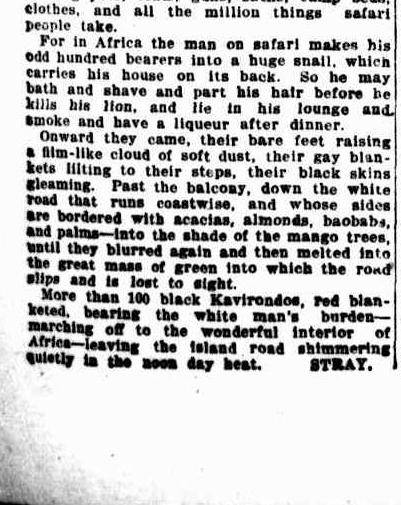
Into Africa: The Epic Adventures of Stanley and Livingstone - Explore Africa as if was over 100 years ago by treading in the footsteps of Stanley and Livingston
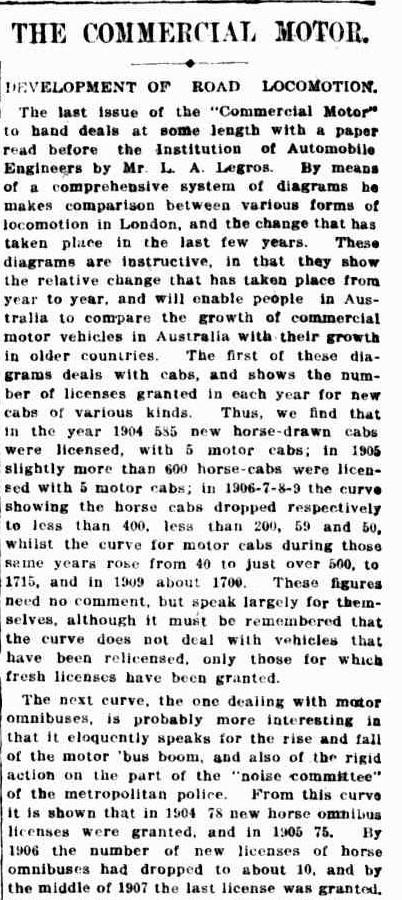
The Commercial Motor - Development Of Road Locomotion
From the Sydney Morning Herald - 6th January 1911
The Sydney Morning Herald on 6th January 1911 had a very interesting article on the Commercial Motor and the Development Of Road Locomotion.
Doesn't it seem amazing that only 100 years ago the automobile industry was still in it's infancy, and the majority of transport, both private and commercial all used horse drawn vehicles.
The article from this day in 1911 reports on the content of a paper that was read before the Institute of Automobile Engineers, showing statistically how in the short space of 5 years, sales of commercial automobiles in London had gone from an insignificant number to levels that sounded the death knell for horse drawn commercial transport.
In 1904, 585 new horse drawn cabs were licensed in London, compared with only 5 motor cabs. The following year, just over 600 new horse drawn cabs were licensed compared with 5 motor cabs.
It's in 1906 however that we see a change, with the number of new horse drawn cab licenses dropping to less than 400, and the number of new motor cab licenses rising to 40.
The following year, we see the beginning of a new era in commercial transport in London, with the number of new horse drawn licenses dropping sharply to under 200 and the number of motor cab licenses rising to more than 500.
1908 and 1909 respectively saw only 59 and then 50 new licenses being issued for horse drawn transport, whereas for new motor cabs they rocketed to 1715 and 1700.
The figures speak for themselves, as it becomes obvious from the data that many operators of horse drawn cabs are switching over to motor cabs at a rapid rate, having had several years to see the benefits of the automobile over horse power.
The author predicts that by the early 1920s, horse drawn cabs and omnibuses will be obsolete, and that most horse drawn vehicles will have disappeared. How right he was in that prediction.
Read the original digitised article...
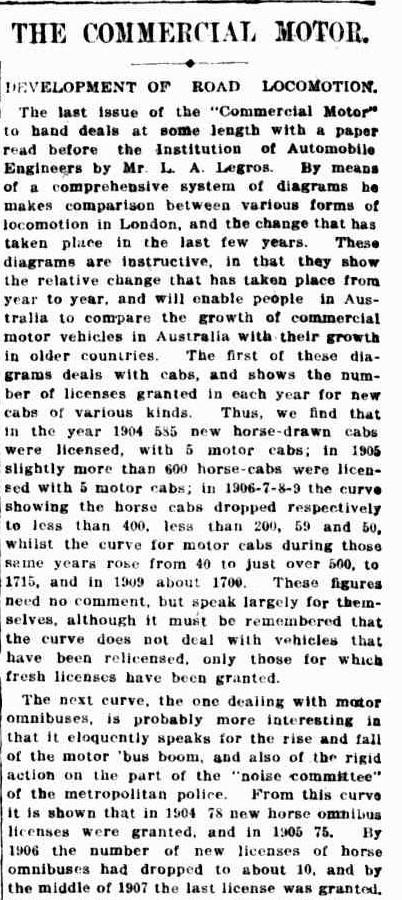
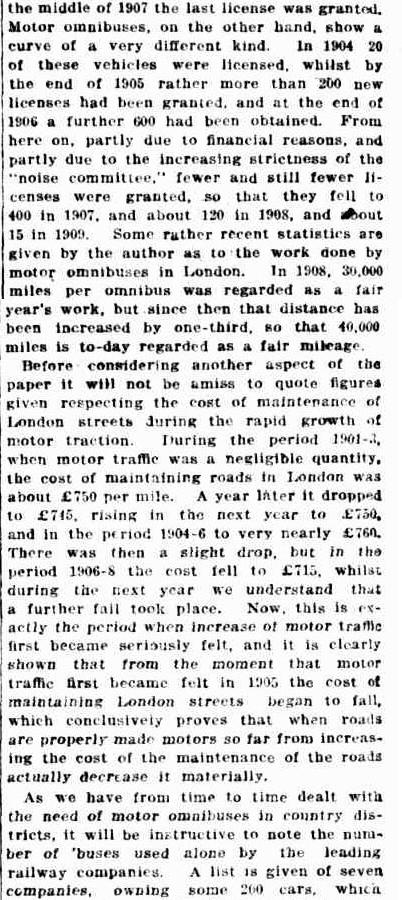
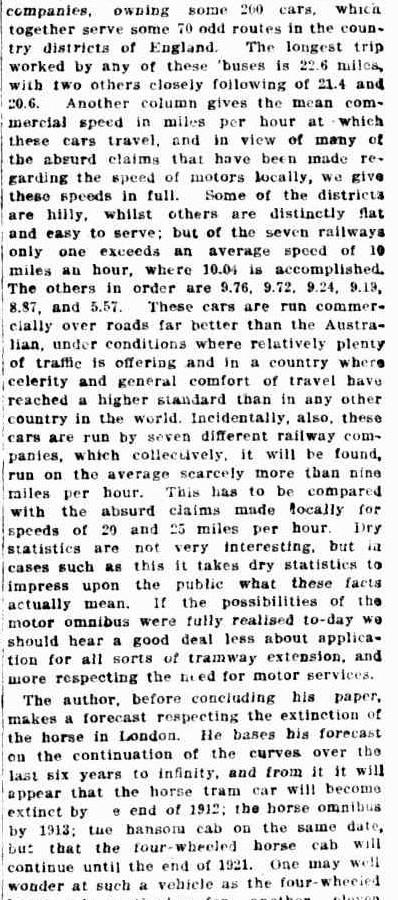
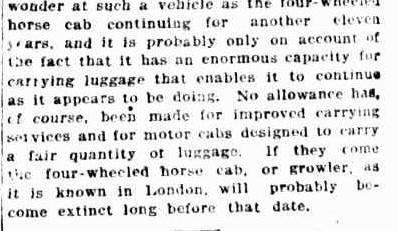
London Transport Posters - The perfect gift for anyone who loves old transport posters
About The Author Of This Page
Tony is a freelance writer who lives on the South Coast of England with his wife Debbie.
He has worked in the IT Industry all his life, and has been writing on various sites for the last 10 years, and although you might expect that he writes about technical topics, it's anything but that.
He enjoys writing about many different topics, often writing about something that grabs him impulsively at the time. Ancient History and Humor are just two diverse topics that he has a passion for, and he also likes to write about his travel experiences and to share his love of photography.
Tony has traveled extensively, both for business and leisure, and has lived in New Zealand and the USA, becoming an American Citizen before returning to his native England.













